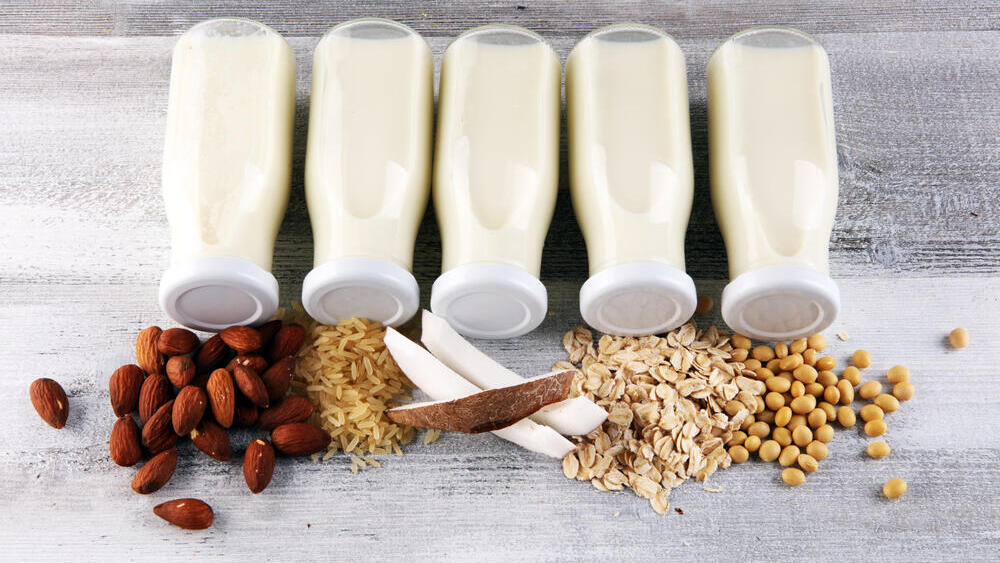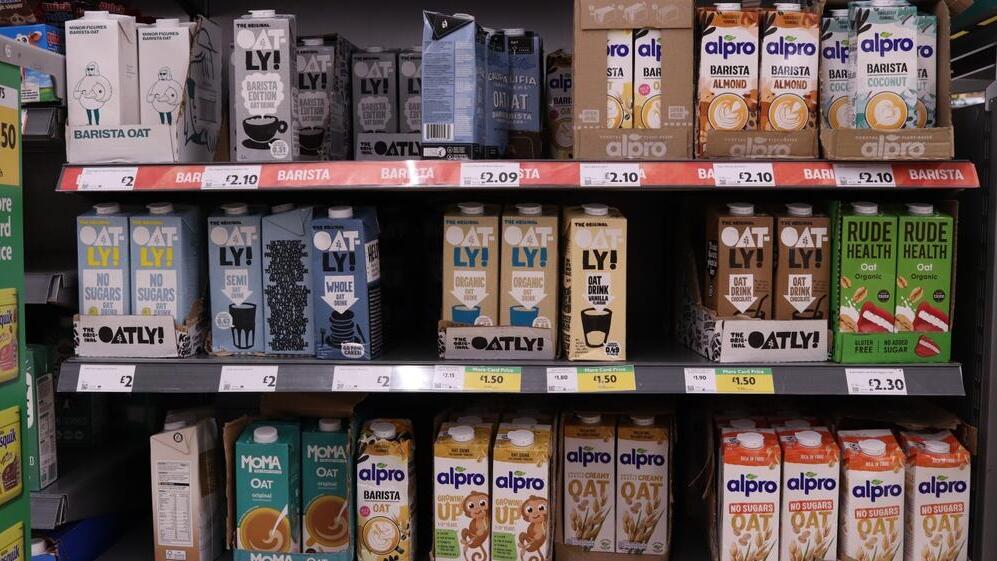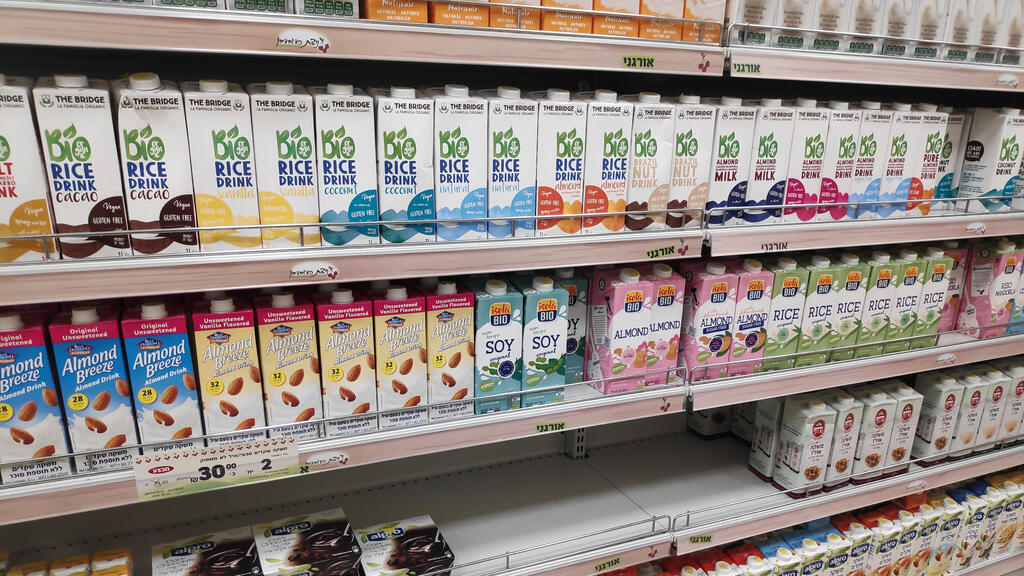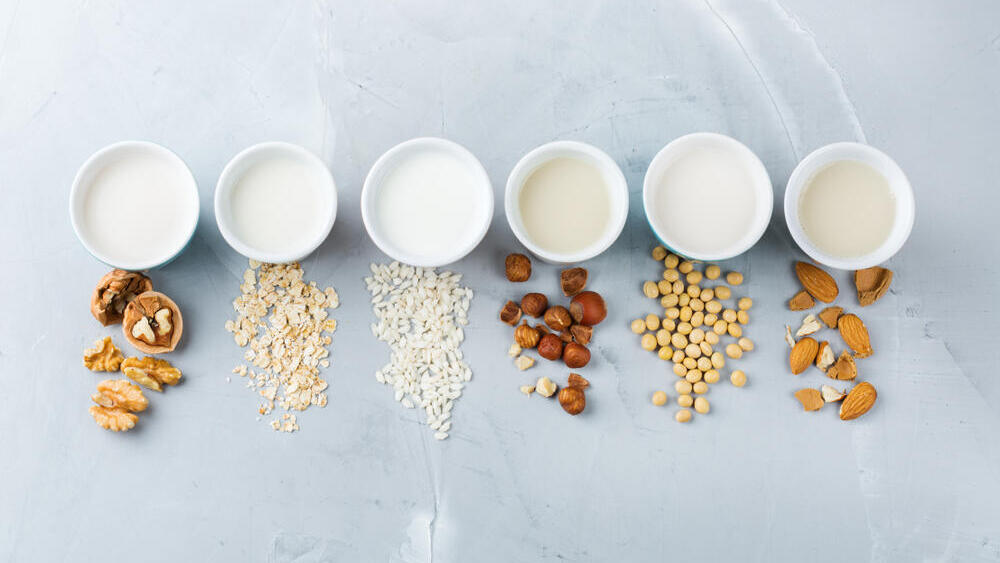In recent years, more people have been cutting back on dairy or eliminating it entirely for health, environmental or ideological reasons. As a result, the market for milk alternatives is booming, offering a growing range of plant-based options made from soy, nuts like almonds and hazelnuts or carbohydrates such as rice and oats.
But with so many choices, picking the healthiest one can be confusing. Experts say not to rely on marketing buzzwords like “light” or “no added sugar,” and instead focus on the ingredient list and nutritional values.
What to look for
• Protein and calcium: Aim for drinks that provide levels close to cow’s milk.
• Added sugar: Prefer unsweetened options.
• Ingredients: Choose drinks with short ingredient lists. Avoid products containing stabilizers, artificial flavors, preservatives or emulsifiers.
In general, the healthiest milk alternatives are high in protein and calcium and low in added sugar and additives.
Nutritional comparison
Cow’s milk (1 cup / 200 ml): Typically contains only milk, with about 120 calories, 200 mg calcium and roughly 2 teaspoons of naturally occurring sugar (lactose).
Soy milk: Made from soaked and ground soybeans blended with water. Often fortified with calcium and vitamins. Soy milk offers protein levels similar to cow’s milk. However, many versions contain added sugar, especially flavored varieties.
Get the Ynetnews app on your smartphone: Google Play: https://bit.ly/4eJ37pE | Apple App Store: https://bit.ly/3ZL7iNv
• Unsweetened soy milk: About 70 calories, 7.4 g protein, 0 tsp sugar, 200–240 mg calcium
• Regular soy milk: About 78 calories, 6 g protein, 1 tsp added sugar, 240 mg calcium
• Flavored soy milk (e.g. vanilla): About 130 calories, 6 g protein, 3.5 tsp sugar, 240 mg calcium
Almond milk: Made from almond extract and water, though the actual almond content is low (2–8%). Most brands contain very little or no protein. They often include emulsifiers, stabilizers, sweeteners and added calcium.
• About 60–140 calories (varies by type)
• 0–2 g protein
• 1.5–3 tsp sugar
• 240 mg calcium
Oat milk: Made from oat extract, which is high in carbohydrates. These drinks often include stabilizers, emulsifiers and sometimes added oils like canola.
• About 80–120 calories
• 0.5–3 g protein
• 6–10 g carbs, including 2–3 tsp sugar
• 240 mg calcium
Rice milk: Made from rice extract, another carbohydrate-rich source. These drinks often contain added vegetable oils (e.g., sunflower), emulsifiers and stabilizers and are usually fortified with calcium and sometimes sugar or sweeteners.
• About 100–120 calories
• 1–2 g protein
• 22 g carbs, including about 2 tsp sugar
• 240 mg calcium
So, what should you choose?
Not everything marketed as “healthy” is truly so. Always read the nutritional label. The best choices are products with at least 3 grams of protein and 100 mg of calcium per 100 ml (about 3.4 fl oz), and minimal added sugar.
The milk alternative with the closest nutritional profile to cow’s milk is typically unsweetened soy milk, due to its high protein content and lack of added sugars.
By contrast, almond, oat and rice drinks generally contain less protein and more sugar, carbohydrates, oils and industrial additives — making them higher in carbs and lower in nutritional value.
- Luda Nevo is a chief clinical dietitian at Sabar Health.





